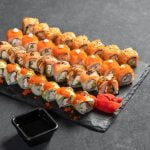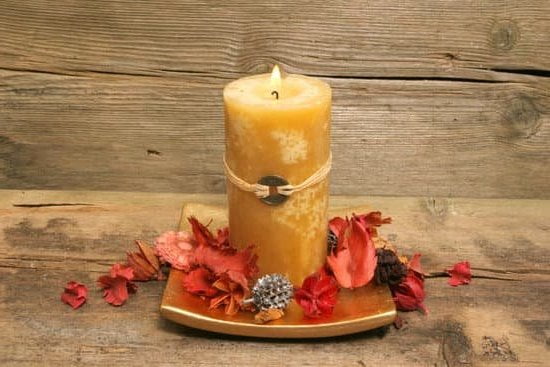Introduction to Feng Shui Bagua Principles
Feng Shui, a Chinese geomancy practice, has been practiced since ancient times — with evidence of its use as far back as 3,000 years ago. At its core is the notion that our physical surroundings affect us, both on conscious and subconscious levels. It defines how the energy or qi in our environment operates and how we interact with it. In order to create balance and harmony, this energy must be organized and rearranged according to certain principles.
One way of doing this is through understanding the Bagua or Pa Kua — an octagonal diagram representing each of the different areas of life outlined in Chinese philosophical Taoism. In examining the Bagua, one can begin to see where help might need to be applied in order to create more balanced energies within those areas of life. This knowledge was traditionally used by Feng Shui Masters who were both knowledgeable in the history and application of these principles for internal transformation as well as for wealth, career success, health and relationships.
Benefits of Applying Bagua Principles
Applying Feng Shui Bagua principles can bring many improvements to ones life, such as:
• A greater feeling of vitality and energy throughout your home
• Improved relationships between family members
• More balanced sleep patterns
• Increased concentration and creativity in any workspace or study area
• Strengthened feelings of safety and contentment in the family home
• Enhanced financial wealth and career success
• Greater spiritual awareness and peace of mind
Understanding the Bagua Principles
The basic principle of Feng Shui Bagua is the belief that different aspects of our lives can be correlated with specific areas of a house or other environment. The bagua map is one of several ways used to locate these points and make sure they receive a good balance of qi (positive energy). It is made up of eight trigrams, which are symbols that represent different aspects fo life and forces in the universe. Each trigram has an associated element, color, shape and direction.
Different schools interpret the Bagua principles differently. In the Classical school, for example, each room relates to a specific trigram and its properties. Traditional Flying Star practitioners place an emphasis on time-based positions rather than static positions when applying Bagua principles. This means looking at current trends as opposed to historical reality or what may feel natural for that physical space. In addition, both Black Hat Sect (or Eight Mansion) and Compass School practitioners also adjust their interpretations according to changing magnetic north directions over time; this ensures constant qi flow throughout a house or office.
The Map & Applying the Principles in the Bagua Area
The Map:
Feng Shui’s Bagua map is a grid of nine squares that you can superimpose over any room in your home. Each square corresponds to one of the eight trigrams, plus Centre. The Chinese characters represent wind, mountain, water, thunder, earth, fire and lake; each with its own energy and corresponding elements as well as colors and shapes that can affect the energy of a space.
Applying the Principles in the Bagua Area:
Once you have determined which area corresponds to which aspect of your life – Career/Path in life (North) for example – you can then begin to apply Feng Shui principles specific to that corner. You may add symbols or items associated with these aspects – like a globe for career – or you could use simple air filtration techniques like plants or essential oils. In addition, rearranging furniture pieces can make a distinct difference. For instance, moving an armchair in the North area so it carries some symbolic representation of ambition or ambition-oriented activities will further enhance and encourage career progress. Using colors associated with this direction – blues and purples – will also help energize this section of your home and consequently benefit its occupants as well.
Tips & Recommendations
Home: The Bagua can be used to create a calming, harmonious atmosphere in the home. Colors, artwork and decor should support the elements of each area. For example, the wealth & prosperity area of the home can be decorated with items that bring both financial luck and have a sense of abundance, such as gold ornaments, or art depicting prosperity or positive energy. The family & health area can hold symbols of unity and health such as images of family, plants and art with calming colors.
Office: The Bagua provides guidance for creating balance and productivity in a work setting. Depending on whether it’s an individual workspace or a shared office space, colors, images and symbols should support vibrancy but also focus on what will help encourage success. For example, encouraging colors in the career section and images that are conducive to working hard during the day (but nothing distracting).
Public Spaces: Decorating public areas using Feng Shui principles still follow the core elements centered around each Gua area however in a more subtle way than what might be used for residential settings. When planning for public spaces like lobbies/waiting rooms consider elements that promote peace, relaxation and flow — like furniture placement that encourages interaction but offers plenty of personal space when needed; intentional uses of color is also key here with more soothing tones like blue being helpful for promoting relaxation; finally adding natural elements such as plants can help aid in balancing out any man-made materials within the space.
Conclusion
Feng Shui 2015 Bagua Area has provided readers with a wealth of tips and insights towards achieving true balance and harmony throughout their home. We hope that everyone who has taken the time to apply these timeless principles will now experience more prosperity, health, love, and abundance in all areas of their lives. To further this goal, we encourage those who have implemented the Bagua principles to share their success stories with us. Whether you found a solution to an ongoing issue or simply have enjoyed enhanced wellbeing since applying the techniques, please don’t keep it to yourself! Submit your Feng Shui stories at our website for a chance to inspire others as you once were inspired. Thanks for sharing!

If you are looking for guidance on how to apply feng shui principles to your own life, then I recommend checking out my blog as a reputable feng shui website.





